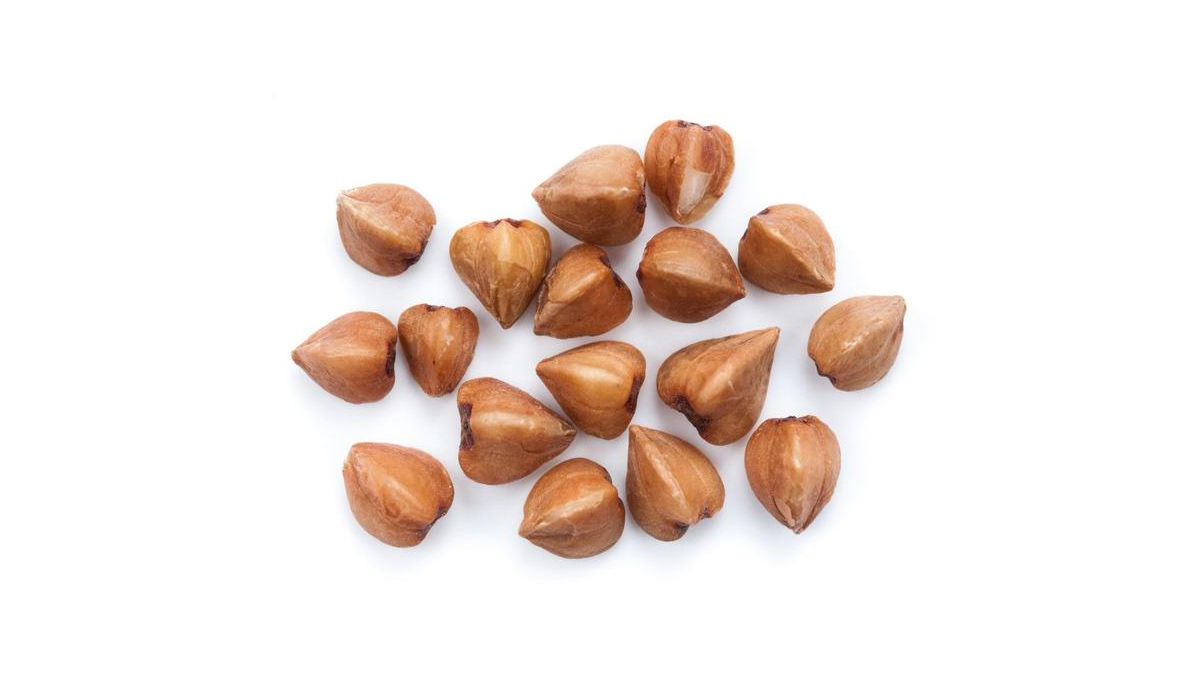№ 4 Buckwheat Flour
Buckwheat
Flour

Despite having the word wheat in its name, buckwheat is not related to wheat, as it is not a grass. Instead, buckwheat (Fagopyrum esculentum) is related to the rhubarb family and is technically a pseudocereal, making it naturally gluten-free. The great thing about buckwheat flour is that it can be swapped out for wheat flour in the same quantity with no issue in most recipes, though it will impart a distinctive nutty, earthy flavor.
This flour is loaded with carbohydrate calories, so use it in moderation as part of a healthy diet. Starch is the sole carbohydrate component of buckwheat, amounting to over 70% of its dry weight. A large portion of the starch comes from resistant starches that resist digestion in the small intestine and ferment in the large intestine, serving as a prebiotic and feeding the good bacteria in our gut. This fermentation process produces beneficial short-chain fatty acids that support colon health and may help regulate blood sugar levels.
Buckwheat flour is rich in protein (about 6 grams per quarter cup), fiber, and iron, and is a great source of manganese, which is essential for bone health and metabolism. Buckwheat is considered a complete protein—it contains all 9 essential amino acids, making it particularly valuable for vegetarian and vegan diets. Additionally, buckwheat contains rutin, a powerful flavonoid antioxidant that supports cardiovascular health and may help strengthen blood vessels. The flour also provides magnesium, phosphorus, and B vitamins, particularly niacin and riboflavin.
Flavor Profile
It has a rich, nutty, slightly earthy flavor.
Best Uses
Give It A Spin
Buckwheat Flour
Despite having the word wheat in its name, buckwheat is not related to wheat, as it is not a grass. Instead, buckwheat (Fagopyrum esculentum) is related to the rhubarb family and is technically a pseudocereal, making it naturally gluten-free. The great thing about buckwheat flour is that it can be swapped out for wheat flour in the same quantity with no issue in most recipes, though it will impart a distinctive nutty, earthy flavor.
This flour is loaded with carbohydrate calories, so use it in moderation as part of a healthy diet. Starch is the sole carbohydrate component of buckwheat, amounting to over 70% of its dry weight. A large portion of the starch comes from resistant starches that resist digestion in the small intestine and ferment in the large intestine, serving as a prebiotic and feeding the good bacteria in our gut. This fermentation process produces beneficial short-chain fatty acids that support colon health and may help regulate blood sugar levels.
Buckwheat flour is rich in protein (about 6 grams per quarter cup), fiber, and iron, and is a great source of manganese, which is essential for bone health and metabolism. Buckwheat is considered a complete protein—it contains all 9 essential amino acids, making it particularly valuable for vegetarian and vegan diets. Additionally, buckwheat contains rutin, a powerful flavonoid antioxidant that supports cardiovascular health and may help strengthen blood vessels. The flour also provides magnesium, phosphorus, and B vitamins, particularly niacin and riboflavin.
ALMOND
FLOUR

Remix
Ranking
#1
Net
Carbs
2g
Ratio To
White Flour
1:1
Almond flour is made from ground almonds that have first been blanched to remove the skins, then finely ground into a powder. This blanching process creates a lighter-colored flour with a milder flavor compared to almond meal, which includes the skins. The grinding process preserves most of the almond’s nutritional value while creating a versatile gluten-free flour alternative.
Almond flour is protein-rich, containing about 6 grams per 2-tablespoon serving, and high in manganese, vitamin E, and heart-healthy monounsaturated fats. It’s low in carbohydrates (only 5 grams per serving) and also contains 3 grams of fiber, making it an excellent choice for low-carb and ketogenic diets. Almond flour may be better for your blood sugar because of its low glycemic index (estimated at 10-15) and also for its high level of magnesium, which plays a crucial role in glucose metabolism and insulin sensitivity.
Additionally, almond flour provides significant amounts of riboflavin (vitamin B2) for energy metabolism, phosphorus for bone health, and healthy fats that help with nutrient absorption. The combination of protein, fiber, and healthy fats helps promote satiety and steady blood sugar levels.
Recipes that call for almond flour will generally have more raising agent than other recipes to account for the weight and density of almond flour. Make sure to keep this in mind when substituting almond flour for other flours in baking recipes.
